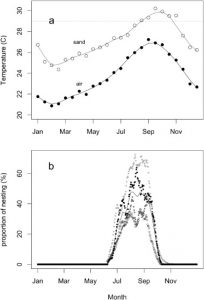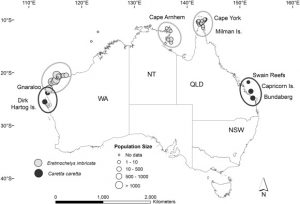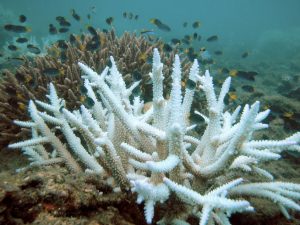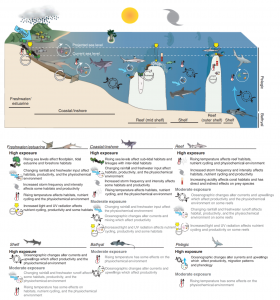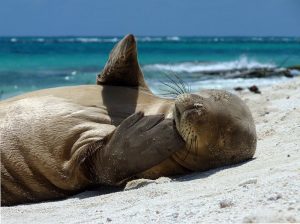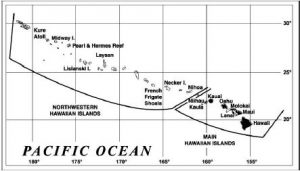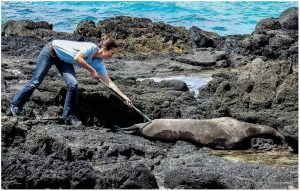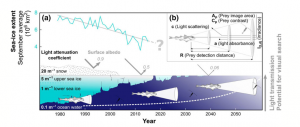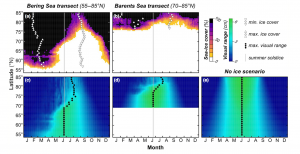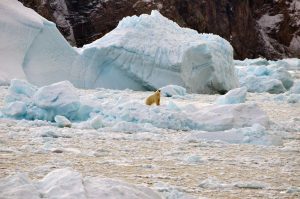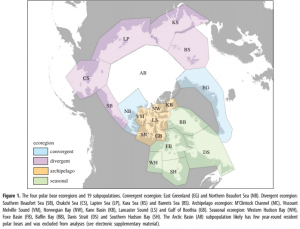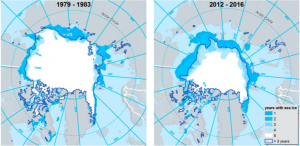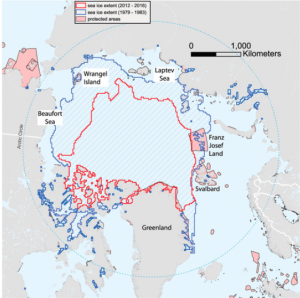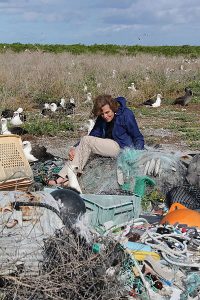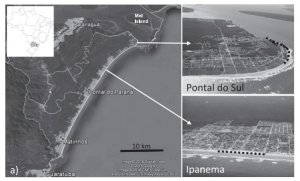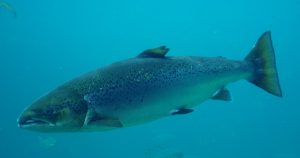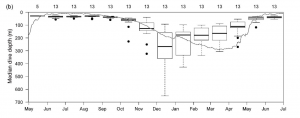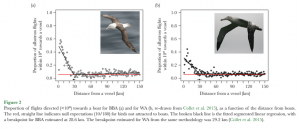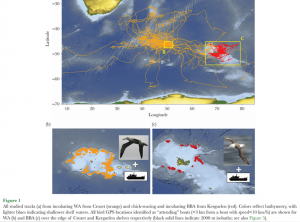The Impact and Epidemic of Overexploitation on Chambered Nautilus Populations
By Sianna Raquel Vacca, SRC intern
The era of one of the cephalopod’s oldest family members and elusive living fossil, the chambered nautilus, may be coming to an end. This prehistoric species has remained unchanged for over 400 million years and is a native of the tropical, deep-water habitats in the Indo-Pacific region. They are closely related to the other cephalopods such as octopus, squid, and cuttlefish and shares various distinguishing characteristics with its’ modern relatives such as jet propulsion (which allows them to attain speeds of about two knots) and the use of their strong beaks to prey on and crush crustaceans. Chambered nautiluses have retractable tentacles in numbers far surpassing 90, which suitably equip them to be deep-sea scavengers and opportunistic predators. While their eye-sight is poor and merely permits them to discern varying light concentrations, this species is greatly dependent upon their sense of smell while hunting.

Figure 1: Chambered nautiluses can extend their tentacles deep into various substrates to search for small, dead marine organisms, such as shrimp. (Source: Flickr).
Although they are biologically similar to other living cephalopods in a handful of ways, the nautilus is a specifically unique species with distinguishable features setting them apart from their relatives. “Most obvious, nautiluses possess the ancestral trait of an external shell; a shell that has protected them for hundreds of millions of year but is dooming them today” (Barord 2015).
Despite the nautilus species’ historical resilience, proven by their survival through all five major mass extinctions, marine conservationists are fearful that they will not fare as well through the sixth global extinction episode. The crudely unregulated and poorly managed nautilus shell harvest industry is depleting Pacific populations at alarming and consequential rates, further exacerbating the biotic threats posed by overexploitation. Their distinctive coiled and patterned shells are internationally sold as souvenirs, jewelry pieces, and home décor items, to name just a few uses. Since there is no evidence or indication that nautilus fishing is part of a cultural practice or stems from historical relevance, it appears that the demand for these shells is superfluous. While habitat destruction and climate change has been used as part of the argument construct to explain the declining nautilus populations, the shell harvest industry, most prominent in the Philippines and western Indonesia, has proven to be the most influential culprit.
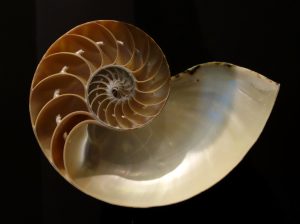
Figure 2: Ornamental nautilus shells are considered to be an international commodity because of their unique, coiled design. The chambers within their shells, as pictured above, actually serve the nautiluses a great physical function by allowing them to either fill or empty these compartments with water to adjust their density. (Source: Pixabay).
DeAngelis (2011) investigated the changes in catch per unit effort (CPUE) in nautilus fishery regions in comparison to an unexploited nautilus population, further proved the impact of overfishing. The paper reports that while an unexploited chambered nautilus population at Osprey Reef, Coral Sea in Australia has remained stable throughout the past twelve years, results from the Philippines show up to 80% declines in reported CPUE from 1980 to the present. This time span consists of fewer than three nautilus generations, indicating that because they are hindered by a slow growth-rate and gradual reproductive output, the chambered nautilus seems to have a low likelihood of recovery or repopulation.
It may seem that this precious, ancient species is doomed to an inevitable extinction within the foreseeable future, however, domestic efforts to starve the shelling industry can have notable impacts. While the United States has historically participated in the nautilus shell trade, a recent recommendation has been submitted to the U.S. Congress from the National Marine Fisheries Service (NMFS) and National Oceanic and Atmospheric Administration (NOAA) to list the chambered nautilus as ‘threatened’ under the Endangered Species Act (ESA). The factual substantiation offered in the aforementioned proposal demonstrates that the survival of this species is in dire need of human intervention, and the protections granted in the Endangered Species Act could potentially reverse the chambered nautilus’ path towards extinction. Defenses for listing the nautilus species as ‘threatened’ under the ESA include:
1) The chambered nautilus serves a greater function alive than that of its hollowed shell.
Chambered nautiluses are part of the complex ecosystem that makes up coral reefs. To avoid predation in the open ocean, these small marine mollusks dwell in reefs for protection. As both an active predator and scavenger, they play a valuable role in their environment.
Additionally, this animal is being harvested for ultimately futile purposes. Unlike some species which are hunted for their meat and act as the primary food source for undeveloped countries, chambered nautiluses are captured for their shells. These shells are then internationally traded and used for aesthetic and nostalgic purposes. The harvest of this species would perhaps be more justifiable if they were being used to prevent some sort of starvation epidemic, but seeing as that is not the case, their current use is unnecessary.
2) This species has already experienced significant population declines.
Due to the excessive chambered nautilus shelling industry in the Philippines, Pacific nautilus populations have notably decreased. While not much is known about these organisms because of how deep in the ocean they live, enough data has been collected to statistically prove that if they continue to be extracted at current rates, they will experience extinction within the foreseeable future.
3) Efforts taken as part of U.S. policy will hopefully encourage other countries to follow suit.
As a global superpower, many nations look to the United States as a model for policy and legislative procedure. While harvesting chambered nautiluses isn’t nearly as prominent of an industry in the U.S. as it is in southeast Asia, formally recognizing that this species is threatened could bring international awareness to this ecological concern. It could encourage other nation-states to institute various policy instruments to protect nautilus populations and promote lasting, world-wide conservation efforts.
This classification could save the chambered nautilus from extinction, albeit directly or indirectly by slowing the rate at which their population declines and allowing for additional measures to be taken.
Works cited
De Angelis, Patricia. “Assessing the Impact of International Trade on Chambered Nautilus.” Geobios, vol. 45, no. 1, 2012, pp. 5–11., doi:10.1016/j.geobios.2011.11.005.
Barord, Gregory Jeff. “On the biology, behavior, and conservation of the chambered nautilus, Nautilus sp.”
Dunstan, A., et al. “Nautilus Pompilius Fishing and Population Decline in the Philippines: A Comparison with an Unexploited Australian Nautilus Population.” Fisheries Research, vol. 106, no. 2, 2010, pp. 239–247., doi:10.1016/j.fishres.2010.06.015.
Dunstan, Andrew, et al. “Nautilus at Risk,Estimating Population Size and Demography of Nautilus Pompilius.” PLoS ONE, vol. 6, no. 2, Oct. 2011, doi:10.1371/journal.pone.0016716.

